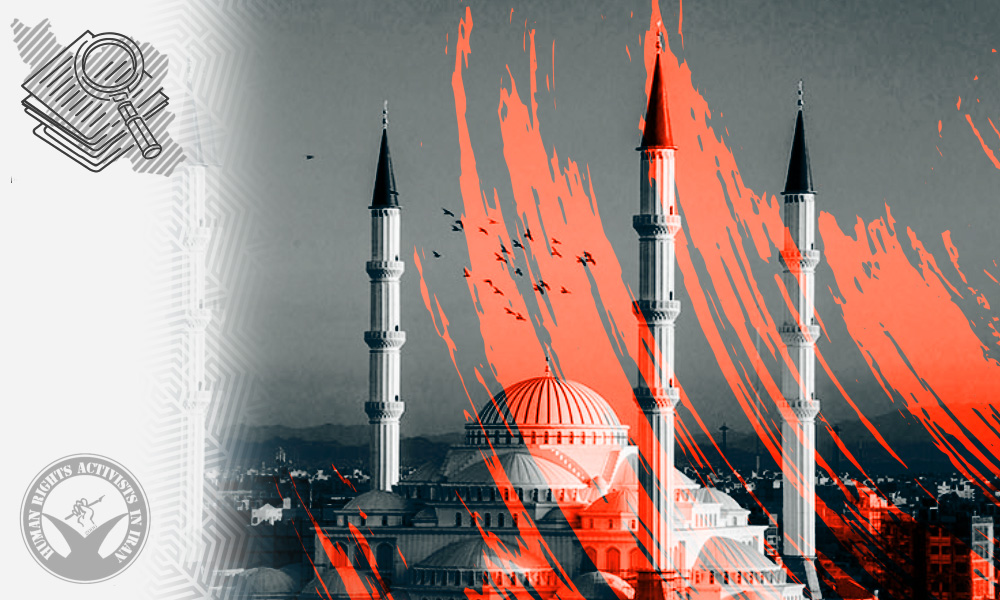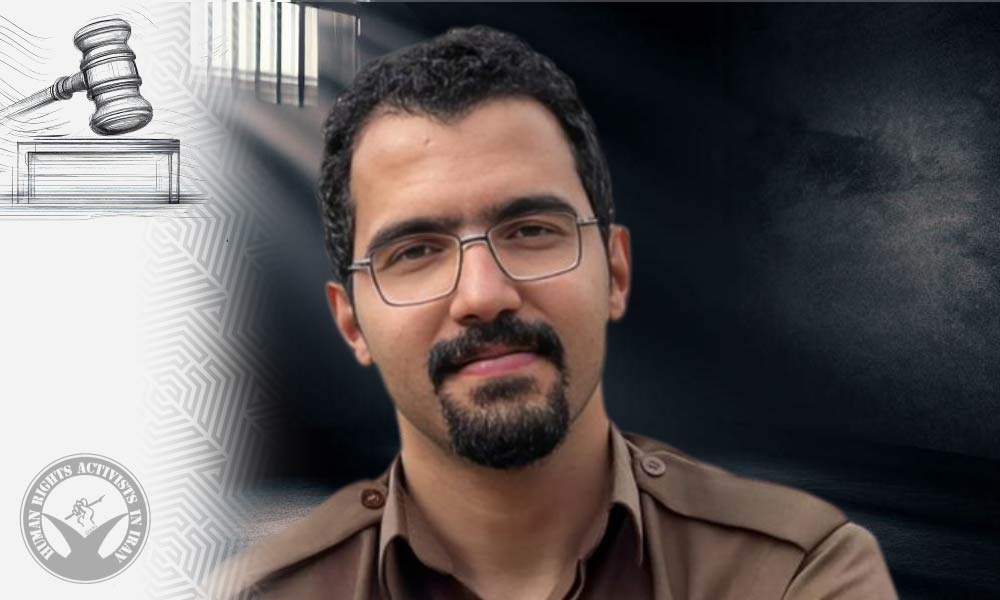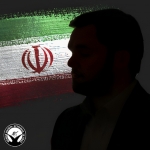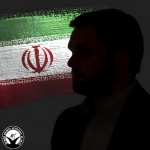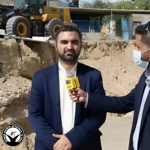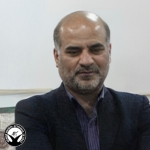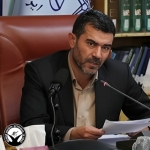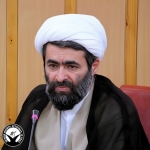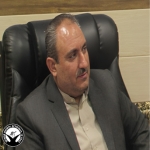HRANA News Agency -The year 1403 paints a stark picture of the continued violation of human rights in Iran. The persistent threat to freedom of thought and expression, the crackdown on peaceful protesters, increased pressure on ethnic and religious minorities, the prosecution and harassment of human rights activists, the execution of juveniles, the plight of child laborers, violations of women’s rights and the rights of sexual and gender minorities, and the poor conditions in detention centers and prisons are just some examples of the daily human rights violations in Iran. The comprehensive report by the Statistics and Publications Center of Human Rights Activists in Iran, presented below, provides a distressing account of human rights violations in the country over the past year.
Provincial Comparison: Introducing HRANA’s Human Rights Violation Index (HRVI)
This year, HRANA – the news agency of the Human Rights Activists in Iran (HRA) – has introduced the Human Rights Violation Index (HRVI) as a data-driven tool for analyzing and comparing the human rights situation across different provinces of Iran. The index provides organizations and researchers with a geographical and temporal framework for monitoring human rights violations.
The HRVI is built on thousands of HRANA’s reports and comprises 37 carefully developed indicators. It categorizes human rights violations into three main areas, each represented by a sub-index:
Political Rights Suppression Index (PRSI):
This sub-index measures actions by Iran’s security and judicial apparatus aimed at suppressing political and civil activism. It covers state-led violations against a wide range of groups, including civil rights activists, labor and women’s rights advocates, journalists, and others. Focused on direct government involvement, it captures incidents such as arbitrary arrests by security forces, prison sentences for political charges, and frequent summons or interrogations.

Lack of Legal Protection Index (LLPI):
This sub-index assesses the government’s failure or unwillingness to provide legal protection for vulnerable groups such as women, workers, and children. It measures the state’s inability to shield people from violence, discrimination, and exploitation through a variety of indicators.

Physical Integrity Index (PII):
This sub-index tracks state-led violent actions directly targeting citizens, including prisoners, kulbars (border porters), and fuel carriers. It also covers severe and inhumane punishments such as executions, torture, and prolonged solitary confinement.

Each indicator is weighted according to the severity and impact of the violation to ensure that the most egregious cases have a greater influence on the overall index. The final HRVI score is calculated based on the weighted sum of these three sub-indices.

For a detailed breakdown of the indicators and the methodology behind the index, please refer to the HRVI documentation.
In summary, through extensive data collection and statistical modeling, the Human Rights Violation Index offers a quantitative and structured approach to assessing the human rights landscape in Iran.
Freedom of Thought and Expression
In 1403, a total of 1,141 reports were recorded in the field of thought and expression. During this period, at least 1,300 people were arrested, 168 of whom were detained without a judicial warrant. Additionally, 307 cases of prosecution, 39 cases of home searches, 25 instances of convicting publications, 3 cases of internet filtering, 1 case of property confiscation, 74 protest gatherings, 3 cases of preventing gatherings, 2,621 summonses to judicial authorities, and 161 instances of sentence enforcement were documented.
In this domain, judicial authorities issued at least 22,986 months of imprisonment for 548 individuals. This included 20,864 months of enforceable imprisonment and 2,122 months of suspended sentences. Notably, 4,965 months of these sentences were issued by the appellate court and 252 months by the Supreme Court. Additionally, 81 individuals were fined a total of 5,589 million tomans (approximately 70,000 dollars), 95 individuals were sentenced to 6,994 lashes, 28 individuals to 1,152 months of exile, and 78 individuals were deprived of their social rights.
| Year | Number of Arrests | Arrests per Million People | Percentage Change Compared to Previous Year |
| 1399 | 2,292 | 27.5 | -45% |
| 1400 | 1,419 | 16.88 | -11% |
| 1401 | 28,647 | 338.2 | +95% |
| 1402 | 2,496 | 29.25 | -48% |
| 1403 | 1,300 | 28.89 | – |
| Judge Name | Court Branch | Court Place | Number of Cases | Prison Sentences (Months) | Lashes | Fine (Million Toman) |
| Jabar Javadi Rami | Criminal Court Branch 2 | Tehran | 44 | 3,576 | 5,550 | – |
| Iman Afshari | Revolutionary Court Branch 26 | Tehran | 41 | 2,095 | 148 | 4,460 |
| Mohammad Reza Tavakoli | Revolutionary Court Branch 1 | Isfahan | 29 | 2,244 | – | – |
| Abbasali Houzan | Appellate Court Branch 36 | Tehran | 23 | 1,569 | – | – |
| Mahdi Rasekhi | Revolutionary Court Branch 3 | Rasht | 17 | 1,023 | – | – |
| Abolghasem Salavati | Revolutionary Court Branch 15 | Tehran | 15 | 1,015 | – | – |
| Mohammad-Sadegh Iran Aghideh | Appellate Court Branch 11 | Gilan | 11 | 727 | – | – |
| Mahdi Fakhri | Criminal Court Branch 101 | Boukan | 11 | 145 | – | – |
| Sajad Doosti | Revolutionary Court Branch 1 | Mahabad | 9 | 402 | – | – |
| Mohammad Karami | Revolutionary Court Branch 1 | Sanandaj | 7 | 277 | – | – |
Children’s Rights
In 1403 Hijri year, a total of 498 reports were recorded in the field of children’s rights. During this period, at least 27 cases of child rape and sexual abuse, 43 cases of child murder, 5 cases of honor killings, 3 abandoned newborns, 9 deaths and 17 injuries among child laborers, 14 deaths and 204 injuries of children due to officials’ negligence, 58 suicides, at least 4,296 cases of child abuse, 28 arrests of individuals under 18, at least 3 million school dropouts, and approximately 2 million child laborers were documented. Additionally, 48 months of enforceable imprisonment were reported for 2 individuals under the age of 18.
Also, at least 5 juvenile offenders were executed in Iran over the past year.
According to official data from the Iranian Statistics Center, as of 1398 in the Hijri calendar, approximately 16.8% of girls aged 15 to 19 in Iran had been married. Among the limited available government statistics on this issue, a report from the same center shows that between winter 1400 to autumn 1401, at least 27,448 girls under the age of 15 were married in Iran. While the rate of child marriages among girls under 15 had been declining since 1396, the trend reversed and began rising again from 1398 onward.
Reports indicate that in 1399 and 1400, 31,646 and 32,655 girls under 15 were married, respectively. The number of marriages involving girls under 15 increased by 933 cases in autumn 1401 compared to the summer of the same year. Furthermore, in autumn 1401, over 5,500 more girls aged 15 to 19 were married compared to the previous season (summer 1401).
According to this report, most child brides become mothers at a very young age. As announced by the National Organization for Civil Registration, in 1400, at least 69,103 newborns were born to mothers aged 10 to 19, and 1,474 newborns were born to mothers aged 10 to 14.
Etemad newspaper reported that Iranian authorities would stop publishing statistics on child marriages and the number of children born to underage mothers. According to the report, an official from National Organization for Civil Registration confirmed that an “order was issued” to prevent the release of this data.
Women’s Rights
In 1403, a total of 253 reports were recorded in the field of women’s rights. These included 125 cases of femicide, 33 honor killings (including the murder of 19 men), 16,567 cases of domestic violence, 5 acid attacks, 3 suicides, 30,642 cases of enforcement related to improper veiling, 2 cases of prosecution, and 14 months of imprisonment for women. Additionally, 74 cases of flogging and fines amounting to 9,500,000 tomans were issued against women.
Over the past year, at least 649 arrests were documented in this category, of which 643 were due to non-compliance with mandatory hijab laws.
Workers’ Rights
In 1403, a total of 1,712 reports were recorded in this category, documenting the arrest of 13 individuals. Additionally, 10 workers or labor activists were sentenced to a total of 340 months of enforceable imprisonment. Furthermore, one individual was sentenced to 24 months of exile. Other documented cases include 31 summonses to judicial authorities, 12 interrogations, 3 trials, 5 instances of sentence enforcement, 5 cases of self-immolation, 6 suicides, 724 protests, 1,377 strikes, 1 house search, and 1 case of property confiscation.
Reports from 1403 indicate that delays or non-payment of wages affected at least 18,121 workers for a total of 592 months. Additionally, 4,765 workers were dismissed or laid off, 585 cases of unemployment were recorded, and 525,592 workers experienced a total of 488 months without insurance coverage. Furthermore, 11 factory closures were reported, leaving 4,835 workers in an uncertain employment status. At least 2,042 workers lost their lives in workplace accidents, and 16,113 workers sustained work-related injuries. Iran ranked 102nd globally in workplace safety compliance, a very low ranking.
Trade and Labor Unions
In 1403, the Statistics and Publications Center recorded 1,436 incidents related to trade unions and professional associations across Iran. These reports include the arrest of 28 union activists, 122 summonses to judicial or security authorities, 536 closures of business premises, 5 instances of physical assault, 1 license revocation, 17 trials in judicial courts, 19 security agency interrogations, 13 dismissals or layoffs, 4 cases of forced retirement, 1,187 protests, and 70 strikes. Additionally, at least 1,613 individuals experienced wage delays totaling 393 months, 3 home searches, and 6 cases of sentence enforcement.
Moreover, 75 individuals were sentenced to a total of 881 months in prison, including 777 months of enforceable imprisonment and 104 months of suspended sentences. Of this total, 147 months were issued by the appellate court. Additionally, 5 individuals were sentenced to 168 months of exile, 1 individual received 29 lashes, and 29 individuals were fined a total of 59,540,000 tomans.
Prisoners’ Rights
In 1403, the following violations of prisoners’ rights were documented: 14 cases of physical assault against political prisoners, 375 instances of medical neglect or deprivation of healthcare services, 312 illegal transfers of prisoners to solitary confinement, 79 hunger strikes, 36 cases of forced transfers or exile of prisoners, 335 cases of threats and pressure against political and ideological prisoners, 156 instances of denied family visits, 5 prisoner deaths due to illness, 18 suicides, 2 cases of self-immolation, 7 prisoner murders, 106 instances of denied access to legal representation, 105 cases of restrictions on phone calls, 75 cases of failure to separate prisoners based on their offenses, 495 cases of prisoners being held in unsuitable conditions, 18 forced confessions, and 99 instances of denial of medical leave.
Additionally, 275 cases of prisoners being held incommunicado and 928 cases of detainees being kept in an indeterminate legal status were documented.
Executions
As in previous decades since the 1979 Revolution, executions in Iran continue to represent one of the most severe forms of human rights violations. In 1403, at least 1,050 individuals — including 29 women and 5 juvenile offenders — were executed. Among them, 5 executions were carried out publicly. During the same period, 189 additional people were sentenced to death, including one individual specifically condemned to public execution. Notably, the Supreme Court also upheld the death sentences of 55 individuals within this timeframe.
| Year | Number of Executions | Executions per Million People | Percentage Change Compared to Previous Year |
| 1399 | 246 | 2.95 | +334% |
| 1400 | 351 | 4.17 | +192% |
| 1401 | 620 | 7.3 | +75% |
| 1402 | 771 | 9.03 | +35% |
| 1403 | 1,050 | 12.18 | – |
| Province | Population | Number of Executions | Execution Rate |
| Alborz | 2,712,400 | 190 | 7.19 |
| Fars | 4,851,274 | 108 | 2.23 |
| Isfahan | 5,120,850 | 84 | 1.64 |
| Razavi Khorasan | 6,434,501 | 67 | 1.04 |
| East Azerbaijan | 3,909,652 | 63 | 1.61 |
| Kerman | 3,164,718 | 45 | 1.42 |
| West Azerbaijan | 3,265,219 | 43 | 1.32 |
| Lorestan | 1,760,649 | 40 | 2.27 |
| Sistan and Baluchestan | 2,775,014 | 36 | 1.3 |
| Zanjan | 1,057,461 | 31 | 2.93 |
| South Khorasan | 768,898 | 31 | 4.03 |
| Yazd | 1,138,533 | 30 | 2.63 |
| Golestan | 1,868,819 | 29 | 1.55 |
| Hamadan | 1,738,234 | 29 | 1.67 |
| Qazvin | 1,273,761 | 28 | 2.2 |
| Gilan | 2,530,696 | 28 | 1.11 |
| Kermanshah | 1,952,434 | 24 | 1.23 |
| Qom | 1,292,283 | 23 | 1.78 |
| Khuzestan | 4,710,509 | 18 | 0.38 |
| Mazandaran | 3,283,582 | 17 | 0.52 |
| Hormozgan | 1,776,415 | 17 | 0.96 |
| Markazi | 1,429,475 | 14 | 0.98 |
| Ardabil | 1,270,420 | 9 | 0.71 |
| Ilam | 580,158 | 9 | 1.55 |
| Semnan | 702,360 | 7 | 1 |
| Kohgiluyeh and Boyer-Ahmad | 713,052 | 6 | 0.84 |
| Kurdistan | 1,603,011 | 6 | 0.37 |
| Bushehr | 1,163,400 | 6 | 0.52 |
| North Khorasan | 863,092 | 4 | 0.46 |
| Chaharmahal and Bakhtiari | 947,763 | 2 | 0.21 |
Ethnic Minorities’ Rights
In 1403, a total of 278 reports were documented in the category of ethnic-national rights. According to these reports, the arrest of 332 citizens was recorded, of which 153 arrests were carried out without a judicial warrant. Although the charges against 234 of these detainees remain unclear, based on patterns and the historical actions of security agencies in the mentioned regions, these arrests have been categorized under ethnic rights violations.
Additionally, 29 individuals were sentenced to a total of 1,244 months in prison, including 1,178 months issued by primary courts and 66 months by appellate courts. Furthermore, 4 individuals were fined a total of 53,600,000 tomans. Other documented cases include the summons of 59 individuals to security and judicial authorities, 5 instances of sentence enforcement, 36 trials, and 17 interrogations.
| Year | Number of Arrests | Arrests per Million People | Percentage Change Compared to Previous Year |
| 1399 | 400 | 4.79 | -25% |
| 1400 | 358 | 4.26 | -10% |
| 1401 | 242 | 2.9 | +33% |
| 1402 | 371 | 4.35 | -11% |
| 1403 | 332 | 3.85 | – |
Religious Minorities’ Rights
In 1403, a total of 169 reports were documented in the category of religious minorities’ rights. According to these reports, 124 citizens were arrested. Additionally, 86 individuals were sentenced to a total of 4,364 months of enforceable imprisonment and 516 months of suspended imprisonment. Of this total, 4,070 months were issued by primary courts and 810 months by appellate courts.
Other documented violations include 63 summonses to judicial and security authorities, 49 trials, 19 interrogations, 1 case of preventing the burial of deceased individuals, 2 cases of cemetery destruction, 47 home searches, 37 travel bans, 20 instances of sentence enforcement, 1 case of property confiscation, and 10 cases of restrictions on economic activities.
| Year | Number of Arrests | Arrests per Million People | Percentage Change Compared to Previous Year |
| 1399 | 100 | 1.2 | +20% |
| 1400 | 67 | 0.8 | +80% |
| 1401 | 175 | 2.1 | -31% |
| 1402 | 148 | 1.73 | -17% |
| 1403 | 124 | 1.44 | – |
| Judge Name | Court Branch | Court Type | Number of Cases | Prison Sentences (Months) | Lashes | Fine ( million Toman) |
| Mohammad Reza Tavakoli | Revolutionary Court Branch 1 | Isfahan | 28 | 2,220 | – | 1,800 |
| Kamran Zare | Appellate Court Branch 37 | Fars | 7 | 232 | – | 261.3 |
| Mahdi Rasekhi | Revolutionary Court Branch 3 | Rasht | 5 | 145 | – | 320.02 |
| Iman Afshari | Revolutionary Court Branch 26 | Tehran | 4 | 524 | – | 910 |
| Gholi Mir Nasab | Revolutionary Court Branch 2 | Sari | 3 | – | – | 100 |
Protests and Strikes
In 1403, at least 2,255 protest gatherings took place across Iran. This figure includes 724 labor protests, 1,187 trade union protests, 74 protests related to freedom of thought and expression, 47 student protests, and 48 environmental protests. Additionally, 175 protests were held across 31 provinces by citizens, most of whom were victims of financial fraud or individuals whose civil rights had been violated. Alongside these protests, at least 70 trade union strikes and 1,377 labor strikes were also recorded.
Civilian Killings
Throughout 1403, a total of 355 civilians were shot by military forces, resulting in the deaths of 156 individuals. This includes the deaths of 31 kolbars (border couriers), 42 fuel carriers, and 83 other civilians. Additionally, 199 civilians sustained injuries due to indiscriminate gunfire by military personnel, comprising 105 kolbars, 51 ordinary citizens, and 43 fuel carriers.
It is also worth noting that 30 other kolbars were involved in accidents due to environmental and geographical conditions such as hypothermia and falls from heights. Of these, 21 kolbars were injured, and 9 lost their lives. Moreover, 19 fuel carriers were involved in accidents following pursuits by military forces, resulting in the deaths of 5 and injuries to 14 others.
Landmine and Explosion Victims
Landmines left from past wars continue to pose a deadly threat to border residents each year. Meanwhile, the Iranian government continues to produce and plant anti-personnel mines, insisting—contrary to international treaties—that the use of such mines is the only effective way to secure the country’s long borders.
According to data from the past year, at least 9 civilians lost their lives due to landmine explosions in border areas, while 19 others sustained injuries.
Flogging and Amputation Sentences
The International Covenant on Civil and Political Rights explicitly prohibits degrading and inhumane punishments such as flogging and amputation. However, according to compiled data from 1403, at least 4 defendants were subjected to a total of 108 lashes under judicial orders in Iran. Additionally, Iranian courts sentenced at least 159 individuals to a total of 10,984 lashes.
Furthermore, the amputation sentences of two convicts were carried out, while four other individuals were sentenced to amputation by Iranian judicial authorities.
Sentences Issued
Over the past year, courts across Iran issued verdicts in 744 cases, collectively sentencing individuals convicted on political or ideological grounds to 27,857 months of enforceable imprisonment and 21,831 months of suspended imprisonment. Of these, 43,209 months were ruled by primary courts, 6,227 months by appellate courts, and 252 months by the Supreme Court.
Additionally, judicial authorities issued fines totaling 9,999,172,000 tomans, 7,127 lashes, 86 travel bans, 142 instances of deprivation of social rights, and 1,344 months of exile.
Arrests
In the past year, the arrest of 2,491 individuals in Iran was based on political or ideological grounds, or in clear violation of human rights principles. Among the most significant cases were 1,300 arrests related to freedom of thought and expression. Other documented arrests include:
. 13 laborers and labor activists
. 28 individuals under 18
. 4 student activists
. 28 trade union activists
. 124 religious minority members
. 1 individual in the cultural sector
. 1 individual from the LGBTQ+ community
. 11 environmental activists
. 332 individuals of ethnic backgrounds
It should be noted that the charges against 234 of these ethnic individuals remain unclear. However, based on established patterns and the actions of security agencies in the affected regions, these arrests have been classified under ethnic-national rights violations.
Additionally, at least 649 arrests related to women’s rights were recorded, of which 643 were due to non-compliance with mandatory hijab laws.
| Year | Number of Convicted Individuals | Percentage Change Compared to Previous Year |
| 1399 | 741 | +0.4% |
| 1400 | 1,051 | +40% |
| 1401 | 1,075 | -30.7% |
| 1402 | 843 | -11.7% |
| 1403 | 744 | – |
| Year | Number of Months of Imprisonment Issued | Percentage Change Compared to Previous Year |
| 1399 | 26,775 | +4% |
| 1400 | 13,316 | +109.1% |
| 1401 | 33,671 | -17.2% |
| 1402 | 33,790 | -17.5% |
| 1403 | 27,857 | – |
| Judge Name | Court Branch | Court Place | Number of Cases | Prison Sentences (Months) | Lashes | Fine (Million Toman) | |
 | Mohammad Reza Tavakoli | Revolutionary Court Branch 1 | Isfahan | 57 | 4,464 | – | 1,800 |
 | Iman Afshari | Revolutionary Court Branch 26 | Tehran | 51 | 2,793 | 148 lashes | 1,356 |
 | Jabar Javadi Rami | Criminal Court Branch 2 | Tehran | 44 | 3,576 | 5,550 lashes | – |
 | Abbasali Houzan | Appellate Court Branch 36 | Tehran | 31 | 2,013 | – | 1,000 |
 | Abolghasem Salavati | Revolutionary Court Branch 15 | Tehran | 26 | 1,999 | – | – |
 | Mahdi Rasekhi | Revolutionary Court Branch 3 | Rasht | 25 | 1,312 | – | 320.02 |
 | Mohammad-Sadegh Iran Aghideh | Appellate Court Branch 11 | Gilan | 13 | 800 | – | 800 |
 | Mahdi Fakhri | Criminal Court Branch 101 | Boukan | 11 | 145 | – | – |
 | Sajad Doosti | Revolutionary Court Branch 1 | Mahabad | 9 | 156 | – | – |
 | Mostafa Narimani | Revolutionary Court Branch 3 | Karaj | 8 | 431 | – | – |
| Year | Number of Arrests | Arrests per Million People | Percentage Change Compared to Previous Year |
| 1399 | 2,950 | 35.37 | -18% |
| 1400 | 1,884 | 22.28 | +30% |
| 1401 | 29,950 | 353.6 | -92% |
| 1402 | 3,864 | 45.28 | -35% |
| 1403 | 2,491 | 28.89 | – |
Final Note
It is important to emphasize that the statistics presented in this report do not fully capture the state of human rights in Iran. The Iranian government restricts the activities of independent human rights organizations and limits their access to essential information. As a result, these figures represent only a minimum estimate of the human rights situation in the country, compiled exclusively by civil society groups — including HRANA — and documented by its Statistics and Publications Center.




